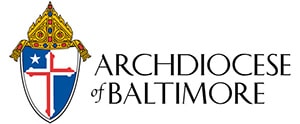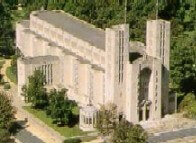- Contact Us
- Careers
- Policies
- About Us
- Events
- Parishes
- Schools
- Ministries
- The Office of Black Catholic Ministries
- Hispanic Ministry
- Charismatic Renewal
- Marriage & Family Life
- College Campus Ministry
- Miscarriage Ministry
- Prayer Ministry
- Deaf Ministry
- Prison Ministry
- Disabilities Ministry
- Divine Worship
- Divorce Support
- Faith Formation
- Grief Ministry
- Mental Wellness Resources
- Respect Life
- Seek the City to Come
- Young Adult Ministry
- Youth Ministry
- LGBT Pastoral Accompaniment
- Vocations
- myArch
- Outlook365
- Ethics Hotline
- Giving
- Promise to Protect

 $20 million. The Church of Baltimore selected three well-known architects, Maginnis, Walsh and Kennedy of Boston, had each design a sketch, traditional, modified and modern. Of these designs a modified Gothic design was chosen.
$20 million. The Church of Baltimore selected three well-known architects, Maginnis, Walsh and Kennedy of Boston, had each design a sketch, traditional, modified and modern. Of these designs a modified Gothic design was chosen. The new cathedral was astounding in its size. Built to seat 1900 people, the Cathedral is 373 feet long (41 feet longer than St. Patrick’s Cathedral in New York City), 132 feet wide and 163 feet to the top of the spires. No structural steel was used for support. Over 3 million bricks and 70,000 pieces of Indiana limestone were used for the interior and exterior facing. Additionally, there are over 385 sculptures and 398 panels of stained glass in the nave. There are also four side chapels dedicated to the Blessed Sacrament, St. Joseph, Our Lady and St. Thomas More (patron saint of the benefactor, Thomas O’Neill).
The new cathedral was astounding in its size. Built to seat 1900 people, the Cathedral is 373 feet long (41 feet longer than St. Patrick’s Cathedral in New York City), 132 feet wide and 163 feet to the top of the spires. No structural steel was used for support. Over 3 million bricks and 70,000 pieces of Indiana limestone were used for the interior and exterior facing. Additionally, there are over 385 sculptures and 398 panels of stained glass in the nave. There are also four side chapels dedicated to the Blessed Sacrament, St. Joseph, Our Lady and St. Thomas More (patron saint of the benefactor, Thomas O’Neill).